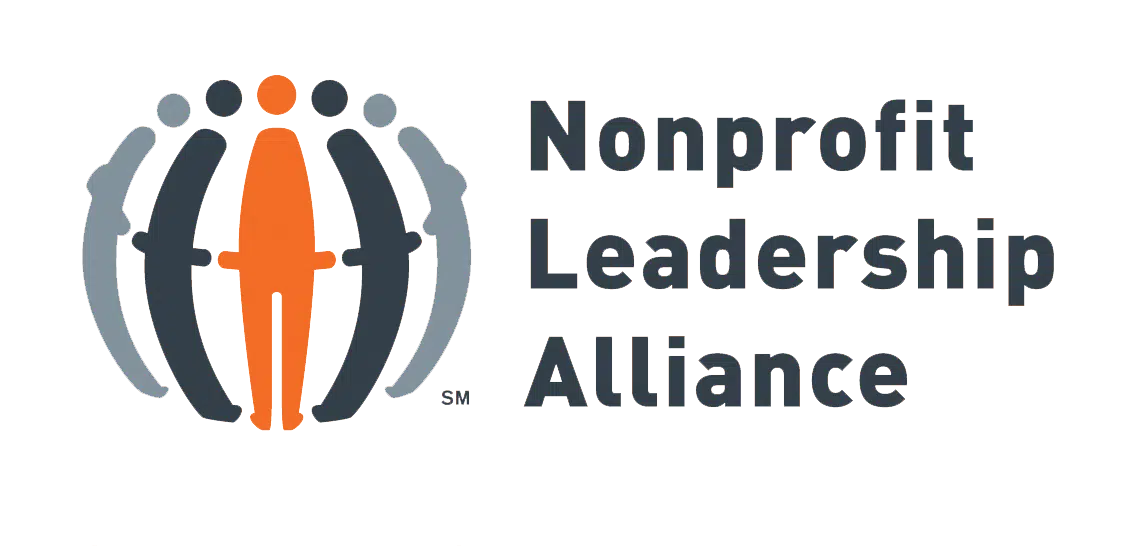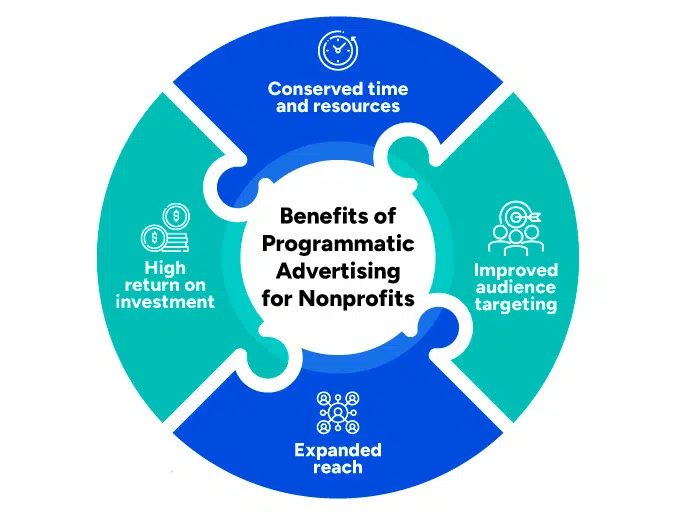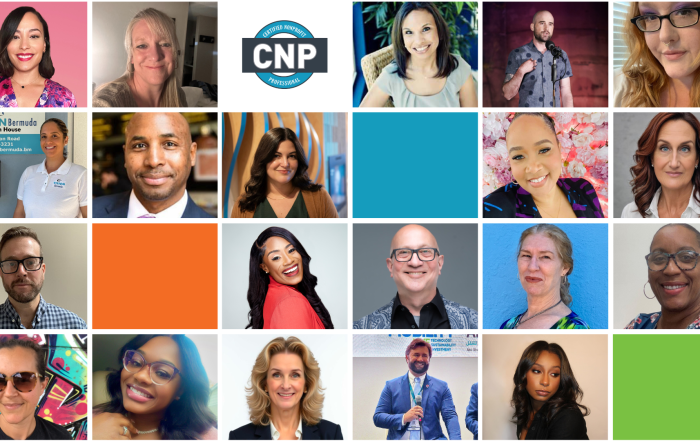When it comes to nonprofit marketing, efficiency is key. Minimizing the time and effort spent on promoting your organization allows you to focus on serving your beneficiaries and fulfilling your mission.
Programmatic advertising introduces automation into the nonprofit marketing process, saving your team valuable time and resources it can reallocate elsewhere. To help you get started with programmatic advertising, we’ll explain the basics, why it’s useful, and tips for successful implementation.
What Is Programmatic Advertising?
Programmatic advertising refers to the use of automated technology to buy and sell digital ad space in real-time. This method leverages artificial intelligence (AI) and algorithms to streamline the ad-buying process for businesses and nonprofits alike.
As a result, organizations can run data-driven ad campaigns in a variety of formats, including:
- Display
- Video
- Social media
- Connected TV (CTV)
With the help of a programmatic platform like Trade Desk or GoogleDV360, nonprofits can raise awareness for their causes and gather new support.
Why Is Programmatic Advertising Useful for Nonprofits?
With so many marketing tactics available to nonprofits, you may be wondering why programmatic advertising is so valuable for charitable organizations. This marketing technique offers a variety of benefits for nonprofits, including:
- Conserved time and resources. Eliminating the need for manual ad placements, programmatic advertising saves nonprofit marketers time and resources that they can use for mission-critical activities.
- Improved audience targeting. Programmatic advertising allows organizations to pinpoint and target specific audiences based on factors like demographics, interests, and online behavior.
- Expanded reach. With the right platform, nonprofits can target potential supporters across several channels and devices to reach them where they are.
- High return on investment (ROI). Since programmatic advertising requires little time and serves effective, targeted ads, it has a high return on investment.
By incorporating programmatic advertising into your nonprofit’s marketing mix, you can get your organization in front of more potential supporters with less investment from your team.
4 Programmatic Advertising Tips for Nonprofits
Now that you have a better understanding of what programmatic advertising is, we’ll explore some tips for how your nonprofit can leverage this tactic effectively.
1. Define goals.
Focus your programmatic campaigns with clear goals that state your intended outcome. While businesses may use programmatic advertising to acquire a certain number of new customers or promote a new product, nonprofits can leverage this marketing tactic to:
- Raise awareness for their causes.
- Increase donations.
- Recruit volunteers.
- Promote fundraising events.
With an overarching goal in place, you can then break down your campaign even further by identifying key performance indicators (KPIs) that help you measure goal success.
For instance, if you’re planning to raise awareness for your cause, you may measure click-through rate (CTR) to see if your ads engage people enough to want to learn more. Alternatively, if you’re looking to recruit volunteers, conversion rate may be a better indicator of success so you can determine your ad’s influence in encouraging viewers to register as volunteers.
2. Segment your audience.
When you group your audience by shared characteristics, you can create tailored campaigns for each segment that cater to their interests and needs. The factors you may choose to segment supporters by include:
- Age
- Lifestyle attributes
- Giving history
- Engagement history
To ensure you have enough data to segment your supporters effectively, consider investing in data enrichment. Data enrichment is the process of making your database more comprehensive by adding third-party data.
For example, let’s say you’re running a video campaign to increase donation revenue. Based on the information you collect from your data enrichment, you create two slightly different calls to action: one that encourages recurring donors to sustain their support and another that urges one-time donors to increase their contributions.
3. Stay up to date on the latest nonprofit marketing trends.
When it comes to nonprofit marketing—but especially solutions that leverage AI like programmatic advertising—there are always new updates and technologies emerging that can transform your organization’s marketing approach.
Referencing industry resources often can ensure you’re on top of innovations and use them to your advantage. For example, NXUnite by Nexus Marketing regularly updates its list of upcoming nonprofit webinars and panels so charitable organizations can learn more about topics like AI, nonprofit marketing best practices, helpful tools and software, and more.
4. Work with a data expert.
At the end of the day, a data or programmatic expert will help you get the most out of the technology you’re leveraging and maximize your ROI. They can grant you access to third-party data for segmentation, recommend relevant segments to create, and help you navigate programmatic platforms.
When looking for a provider, explore the full range of data solutions they have to offer, and read reviews to discover real organizations’ experiences working with each company. Most providers allow you to schedule a consultation so you can discuss your data needs, digital data pricing, and the programmatic campaigns you’re looking to create ahead of time.
While marketing professionals often discuss programmatic advertising in a business context, it can be equally beneficial for nonprofits—allowing them to raise awareness, increase donations, recruit volunteers, and promote events.
With the right data, you can create targeted programmatic campaigns to maximize your success. Just remember to choose a programmatic platform and data provider that prioritizes data privacy and follows all relevant regulations to protect sensitive supporter information.
Did you enjoy this story?
Get nonprofit tips and tools delivered right to your inbox by joining The Nonprofit Leadership Alliance Newsletter. Our bimonthly newsletter will make sure you know what’s happening with our network of social sector leaders.
Why Nonprofit Emails Go Unread — And How To Change That
Nonprofit organizations depend on email as a key communication tool for engaging supporters, sharing impact stories, and driving donations. Yet many nonprofit emails remain unopened or ignored, limiting their reach and effectiveness. Understanding the factors
Types of Tools to Strengthen Your Grants Compliance Approach
When grant funding is an important revenue source, grant compliance becomes critical to nonprofit success. Without it, grant funding could be jeopardized, putting vital programs and initiatives at risk. This makes optimizing your grants compliance
Introducing April 2025’s Certified Nonprofit Professional (CNP) Cohort
The Nonprofit Leadership Alliance is proud to introduce April 2025’s Certified Nonprofit Professional (CNP) Professional Track cohort! This group of nonprofit professionals have begun their six-month journey, participating in one of only four cohorts offered




